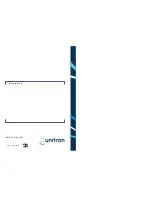
25
24
Warning to hearing instrument dispensers
(to comply with the U.S. Food and Drug
Administration (FDA) regulations)
A hearing instrument dispenser should advise a
prospective hearing instrument user to consult promptly
with a licensed physician (preferably an ear specialist)
before dispensing a hearing instrument if the hearing
instrument dispenser determines through inquiry, actual
observation, or review of any other available
information concerning the prospective user, that the
prospective user has any of the following conditions: (i)
Visible congenital or traumatic deformity of the ear. (ii)
History of active drainage from the ear within the
previous 90 days. (iii) History of sudden or rapidly
progressive hearing loss within the previous 90 days.
(iv) Acute or chronic dizziness. (v) Unilateral hearing loss
of sudden or recent onset within the previous 90 days.
(vi) Audiometric air-bone gap equal to or greater than 15
decibels at 500 hertz (Hz), 1,000 Hz, and 2,000 Hz. (vii)
Visible evidence of significant cerumen accumulation or
a foreign body in the ear canal. (viii) Pain or discomfort
in the ear. Special care should be exercised in selecting
and fitting a hearing instrument whose maximum sound
pressure level exceeds 132 decibels because there may
be risk of impairing the remaining hearing of the hearing
instrument user. [This provision is required only for
those hearing instruments with a maximum sound
pressure capability greater than 132 decibels (dB).]
Weak on the telephone
• Telephone not
positioned properly
• Hearing instrument
requires adjustment
For any problems not listed in the guide, contact your hearing healthcare
professional. If you do not have a hearing healthcare professional, please
contact the nearest office listed on the back page of this booklet.
• Move telephone receiver around ear for
clearer signal. See “Using the telephone”.
• Consult your hearing healthcare professional
Cause
Possible remedy





































